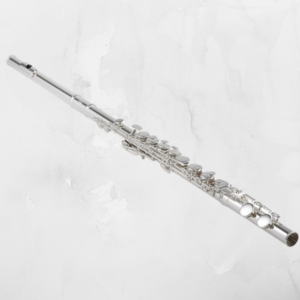 When most people think of the flute, they picture the bright, agile sound of the standard C flute. But there’s another member of the flute family that brings a deeper, richer tone to any performance—the alto flute. With its mellow voice and hauntingly beautiful timbre, the alto flute is a favorite among advanced flutists looking to expand their musical expression.
When most people think of the flute, they picture the bright, agile sound of the standard C flute. But there’s another member of the flute family that brings a deeper, richer tone to any performance—the alto flute. With its mellow voice and hauntingly beautiful timbre, the alto flute is a favorite among advanced flutists looking to expand their musical expression.
What is an Alto Flute?
The alto flute is pitched in G, a fourth below the concert flute. It’s longer and slightly wider in diameter, giving it a darker, warmer sound. Because of its size, it also requires more breath support and slightly different finger spacing. Most alto flutes come with a curved or straight headjoint to accommodate different playing styles and ergonomics.
Why Learn Alto Flute?
For flutists at the advanced level, adding the alto flute to your repertoire opens new doors for performance and creativity. It’s a great instrument for:
-
Flute choirs: The alto flute provides a solid middle voice, balancing out the higher and lower instruments.
-
Flute meditation music: Its soft, airy tone is ideal for calming, ambient compositions.
-
Film scores and new-age music: The alto flute’s unique timbre often features in cinematic and emotional flute music.
If you already have a solid foundation in concert flute and are ready for a challenge, incorporating the alto flute into your practice routine can help you grow as a musician.
Repertoire and Compositions
There is a growing collection of flute compositions specifically written for alto flute. Composers like Katherine Hoover, Simon Desorgher, and David Loeb have created works that showcase its expressive range. In flute meditation music and solo performances, the alto flute brings a distinct tone that sets it apart from the standard flute.
Whether you’re performing advanced flute pieces or writing your own music, the alto flute provides an exciting new palette of sound to work with.
Tips for Getting Started
-
Rent or try before you buy: If you’re unsure, many music shops and online stores like FluteWorld.com allow you to rent or test instruments.
-
Take lessons: Work with a professional flutist or include the alto flute in your current flute lessons to get guidance on technique and repertoire.
-
Explore recordings: Listening to professional recordings of alto flute music can help you get inspired and develop an ear for the instrument’s potential.
Conclusion
The alto flute is a beautiful, expressive instrument that adds depth to your flute playing. Whether you’re interested in performing in a flute choir, creating calming flute meditation music, or simply exploring a new challenge, the alto flute is a valuable addition to any advanced flutist’s collection.







